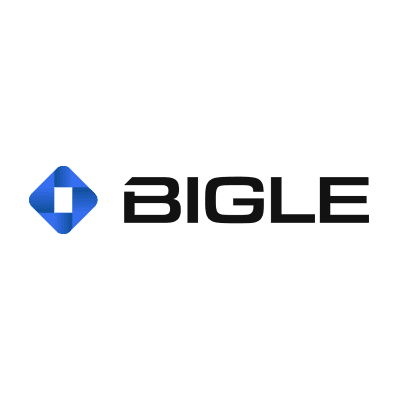Contract Lifecycle Management
What is Contract Lifecycle Management?
Contract lifecycle management (CLM) products provide a suite of applications that handle all or many of the processes involved in end-to-end contract management, from contract generation, drafting and approval workflows, to contract database management, to post-execution contract review, analysis and performance monitoring.
The purpose of CLM software is to manage contracts from offer and acceptance to maintenance and renewal or expiration. The software handles contracts as agreements between two or more parties that create legal obligations enforceable at law and bring a risk of non-compliance with terms and conditions.
Top Products in Contract Lifecycle Management
Why should a company use CLM software?
CLM software enables companies (or their corporate legal departments) to manage contracts from start to end to mitigate risk and reduce costs. By using CLM software, companies are able to apply and enforce standard language in contract offers and negotiations, track and manage legal obligations, and ensure contracts are properly renewed or terminated.
What features does CLM software include?
CLM software allows users to create contracts or receive contract offers from third parties (third-party paper) and manage the agreements through various stages or workflows of drafting, negotiation, approval, signing, and execution. The software stores, searches, and analyzes contract language, metadata, and related documents, including attachments, appendices, exhibits, and amendments, and tracks renewals. It can store contacts related to agreements, such as requestors, approvers, signers, and stakeholders, and associate them with their respective contracts in one-to-many relationships.
Like other legal software, artificial intelligence (AI) and machine learning add value to CLM software. Using AI, an organization can improve contract negotiation and performance and gain insight into contract relationships. AI facilitates contract creation by extracting and analyzing the text of post-execution agreements and third-party paper uploaded to the system and analyzing terms and conditions in draft contracts, and comparing them with a library of an organization's approved clauses.
A checklist of CLM software features includes:
- Extract, analyze, and categorize text from post-execution contracts and third-party paper.
- Create templates of contract types with approved language and clauses.
- Develop contracts from templates and questionnaires.
- Manage the negotiation, approval, and execution of contracts.
- Send contracts to parties for digital signatures.
- Store, search and analyze contacts, contracts, contract metadata, and associated documents.
- Alert approvers and stakeholders on contract status, including renewals.
How can my company use CLM software?
Install and use CLM software on-premises, license cloud-based CLM software-as-a-service (SaaS), or combine on-premises CLM software with SaaS.
Should I choose a CLM software that is cloud-based or on-premises?
Organizations have been slowly migrating to cloud-based SaaS, where reliability, performance, and security requirements can meet or exceed on-premises resources. Small and midsized companies embrace SaaS to compete with the resources of large corporations. Organizations of all sizes can reduce their total cost of ownership in CLM software by using SaaS.
Cloud computing resources expand to meet demands, and high-grade encryption, such as Advanced Encryption Standard, is used to transmit and store data that can reside in various global locations to meet data privacy requirements. Cloud-based CLM software is universally available via web browsers with up-times exceeding 99 percent. Cloud software also integrates with other cloud and local systems to ingest executed contracts, templates, and approved contract clauses.
Using cloud-based CLM software reduces the total cost of ownership. Cloud software requires no capital expenditures (CAPEX) and maintenance on local computers to run the software. It relieves organizations of the administrative burden of supporting, upgrading, and patching on-premises servers and CLM software. The user experience from a cloud-based CLM is like on-premises systems, but users get immediate access to the software's latest features and security updates in the cloud.
Consider on-premises CLM software if the company needs to meet stringent client data security and privacy requirements or integrate with legacy systems that SaaS cannot access. The organization must have sufficient IT budget and resources to support an on-premises CLM deployment.
Should I select an all-in-one or an a-la-carte CLM software?
CLM software is an all-in-one offering to manage the entire contract lifecycle. AI features are relatively new for some vendors that provide it as add-on software. Some vendors assume organizations have complementary software, such as digital signatures, and integrate with digital signature providers, such as Adobe Sign and DocuSign, rather than provide their own built-in e-sign technology.
What should I expect to pay for CLM software?
Cloud-based CLM has predictable and consistent monthly and yearly costs, but the pricing models vary. Providers generally price the software by tiered users, such as those who create, approve, or view contracts, and the number of templates and integrations or connectors required. Prices per user can start as low as $55 (CobbleStone Contract Insight) and $65 (Agiloft) per user per month.
Cloud systems usually allow unlimited contracts and storage space. Some providers include an onboarding service as part of the license, but others may apply a one-time consulting fee. Providers might also need to build and charge separately for custom integrations or connections to an organization's resources.
On-premises CLM software can include a server license, which may be perpetual, annual maintenance, and tiered user access licenses. An organization must use CAPEX to ensure a CLM server has sufficient computer processors, memory, and storage to satisfy the organization's requirements.




